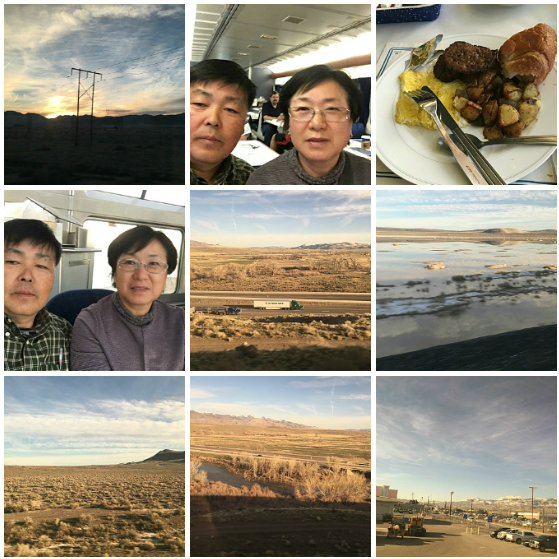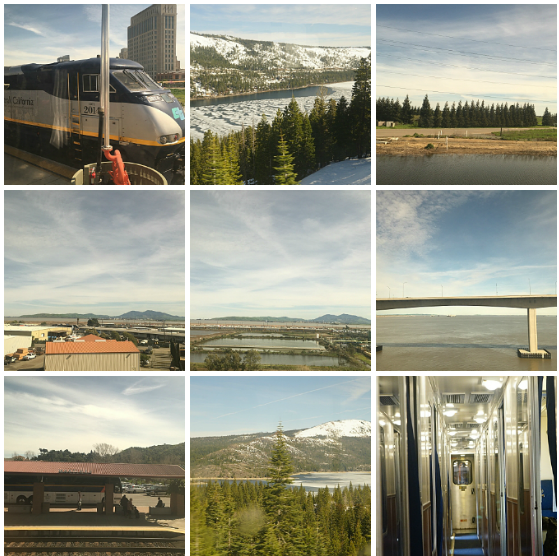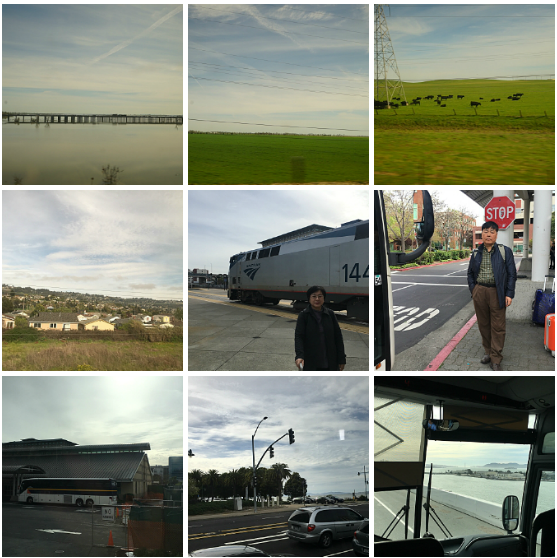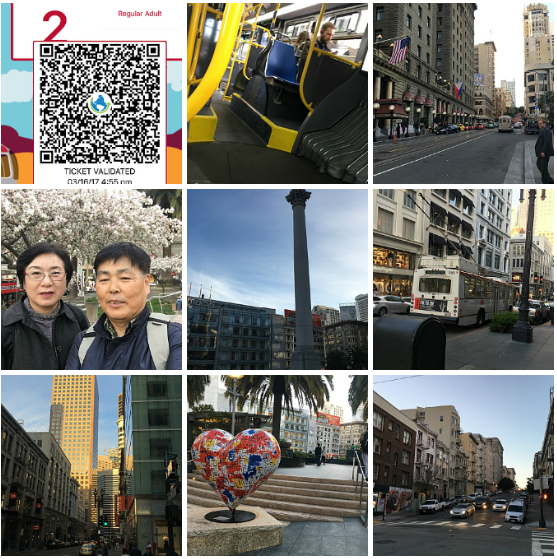여행기/경험 170316 Go West, 캘리포니아를 향해서...대륙횡단기차여행(3)
2017.07.19 20:55
March 16 Thursday 2017 /
기차여행 마지막 날이다
어제 저녁 식사는 그린리버를 지날때 쯤 먹었다. 그때는 몰랐었다. 그린리버란 마을이 아치스국립공원하고 그렇게 가까울 줄을 말이다. 나중에 그랜드 서클을 하면서 마지마 아치스에서 브라이스로 출발할 때 이 그린리버를 지나갔었는데... 이때는 몰랐었던 것이다 . 제일 멀고 접근하기 어려운 곳이라지만 의외로 가까운 곳에 대중 교통 역이 있다니.. 하지만 연계 교통은 쉽지 않을 듯하다. 기차는 모압사막의 언저리를 따라 북쪽으로 계속 올라가서 솔트레이크를 향한다.
처음 미국 여행을 계획할 때 들어 있었던 나이아가라, 요세미티, 엘로우스톤... 이 셋은 모두 3월까지도 추운 날씨 탓에 갈 수 없는 곳들이라 계획에서 지워진 곳들이다. 옐로스톤은 꼭 가보고 싶었는데, 엘로스톤 국립공원을 가려면 여기 솔트레이크를 들려서 가야만 했다. 솔트레이크에서 암트랙을 내려서 자동차를 렌트해서 엘로스톤에 다녀온다 가 계획이었는데.. 암트랙은 하루 한 대 뿐이고 솔트레이크 통과시각은 밤 12시경이고.... 엘로스톤은 비지터센터 근방 하나만 겨우 볼 수 있고... 해서 무산된 곳이다.
이름처럼 짠 소금이 깔려있는 아주 먼 옛날 바다였던 곳이라고 하는 곳인데. 도시 근교 사막지대에서도 물가의 소금 대스벨리처럼 보였다. 한 밤중이지만 솔트레이크에서도 한 참을 정차하고 손님 몇몇은 새로 타고 내린다.
아침 일찍 잠에서 깨어나 시계를 보니 5시 그런데 핸드폰은 네시다. 또 시간대가 바뀌어서 태평양시간으로 바뀐것이다. GPS를 본다. 밀시티 근방을 지나고 있고 왼쪽으로는 3000미터급 스타피크 준봉들일 듯한 산들이 보인다. 차창밖 풍경은 눈덮인 삼림으로 바뀌었다 중간에 스키장도 있었다. 이박삼일동안 너무 편하게 쉰 셈이다 이제 기차는 작은 라스베가스와 비슷한 리노에 머지 않아 도착할 것이다.
시에라네바다 고원지대에 가까이 가면서 풍광은 점점 푸르러 지기 시작한다.







